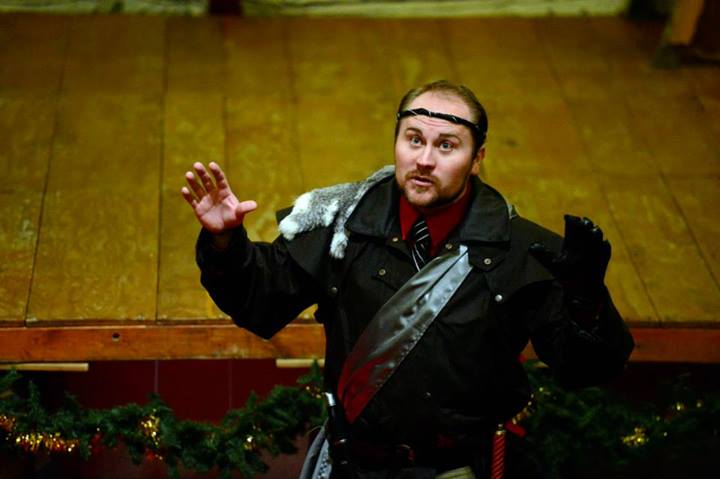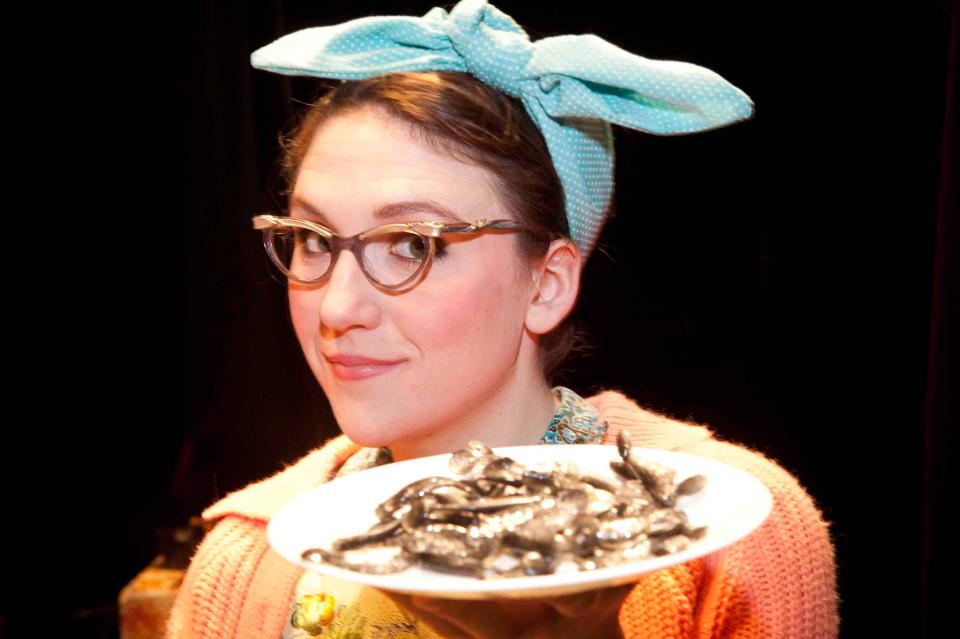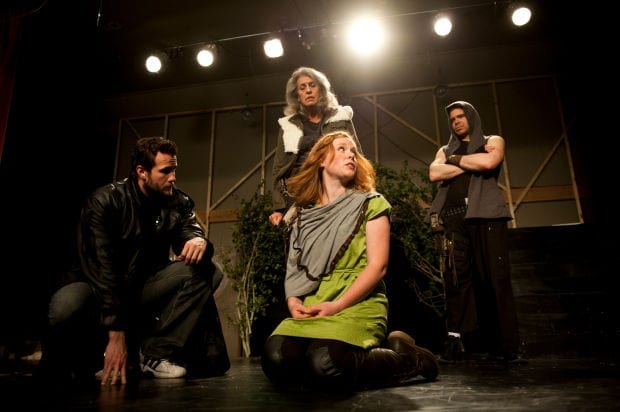SALT LAKE CITY — When I signed up to review The Winter’s Tale, I was intrigued for many reasons. One was that I had never been in the Salt Lake Masonic Temple, and I love old buildings and the culture they represent. Another was that I love to see many different types of theatre, and I had heard many great things about Grassroots Shakespeare Company. Finally, The Winter’s Tale is not a show I have seen produced very often, so I looked forward to an evening of entertainment that was out of the ordinary.
When arriving at the Masonic Temple, I was not disappointed by the beauty of the venue. Theatre goers should be warned that the elevator at the facility was not working, so getting to the show space requires walking up several flights of stairs. While this reminded me of how out of shape I actually am, I admit that the walk was worth it. The room the troupe performed the show in is on the fourth floor, and it is a lovely, cathedral type setting, with many symbols of the Masonic tradition. The acoustics of the room are strong, and helped the players project and perform well.
As the troupe introduced themselves at the beginning of the show they informed new audience goers that they are a team of players that have endeavored to recreate productions the way they may have been during the time of Shakespeare. That means no director, no set designer, no costumer, and very little rehearsal time. Also, as was common during the era, most of the players portrayed more than one character, and much of the casting was gender blind. I was intrigued. I have often felt that producing quality Shakespearean theatre is one of the most difficult endeavors in the theatre world. Timing, memorization, flow of storyline, and characterization are all necessary to develop high quality work. In addition, modern society is so different from Shakespeare’s time period that many people are turned off by title alone. It is precisely because of these reasons that I was thoroughly impressed with this production.
The Winter’s Tale follows the story of King Leontes (played by Benjamin James Henderson) as he allows his insecurities and paranoia to overtake his judgement. Leontes accuses his wife, Hermione (played by Jessamyn Svensson) of infidelity with his good friend, King Polixenes (played by George Lucero). Leontes also accuses his trusted servant Camillo (played by Phil Varney) of disloyalty. As the story unfolds, the King loses all he loves and must undergo penance and sorrow to regain it.
In keeping with the spirit of a Grassroots show, it is difficult to pinpoint one or two particular performances when the entire ensemble does such an excellent job of creating the show. Some of the most beloved aspects of the performance were the attempts to engage the audience. Many times the questions and ponderings of the players were directed to the audience, and the audience was encouraged to respond. This felt a little new to me, and at times I was unsure of the invitations for audience involvement because of the reactions that the actors would sometimes receive. However, the players should be commended with maintaining their Renaissance characters while handling such modern responses from the audience members.
As for individual performances, I was most impressed by the players who capably played more than one role. Svensson played a brave, gentle, and true Hermione, yet also played an excellent comedic Shepherd. Nick Grossiant played three minor roles (Autolycus, Emilia, and Dion) with such finesse that I almost did not recognize him through the changes. Varney’s portral of Camillo was also strong, and as the only character who belongs to both kings’ courts, Varney’s sympathetic Camillo seemed to keep the backbone of the show. In truth, the cast of nine players all deserve commendation for the show, and I find it difficult as a reviewer to pinpoint any extraordinary strengths or weaknesses.
The show was run without an intermission, which was an excellent choice. When the show was finished, I was surprised at how fast the time had passed and at how entertained I had been the entire time. I believe that Grassroots Shakespeare Company succeeded in their goal of portraying a show as Shakespeare may have done, and I look forward to seeing more such productions. I also think this show would be an excellent way to introduce a younger theatre patron or someone not well vested in Shakespeare to the beauty of the genre.










